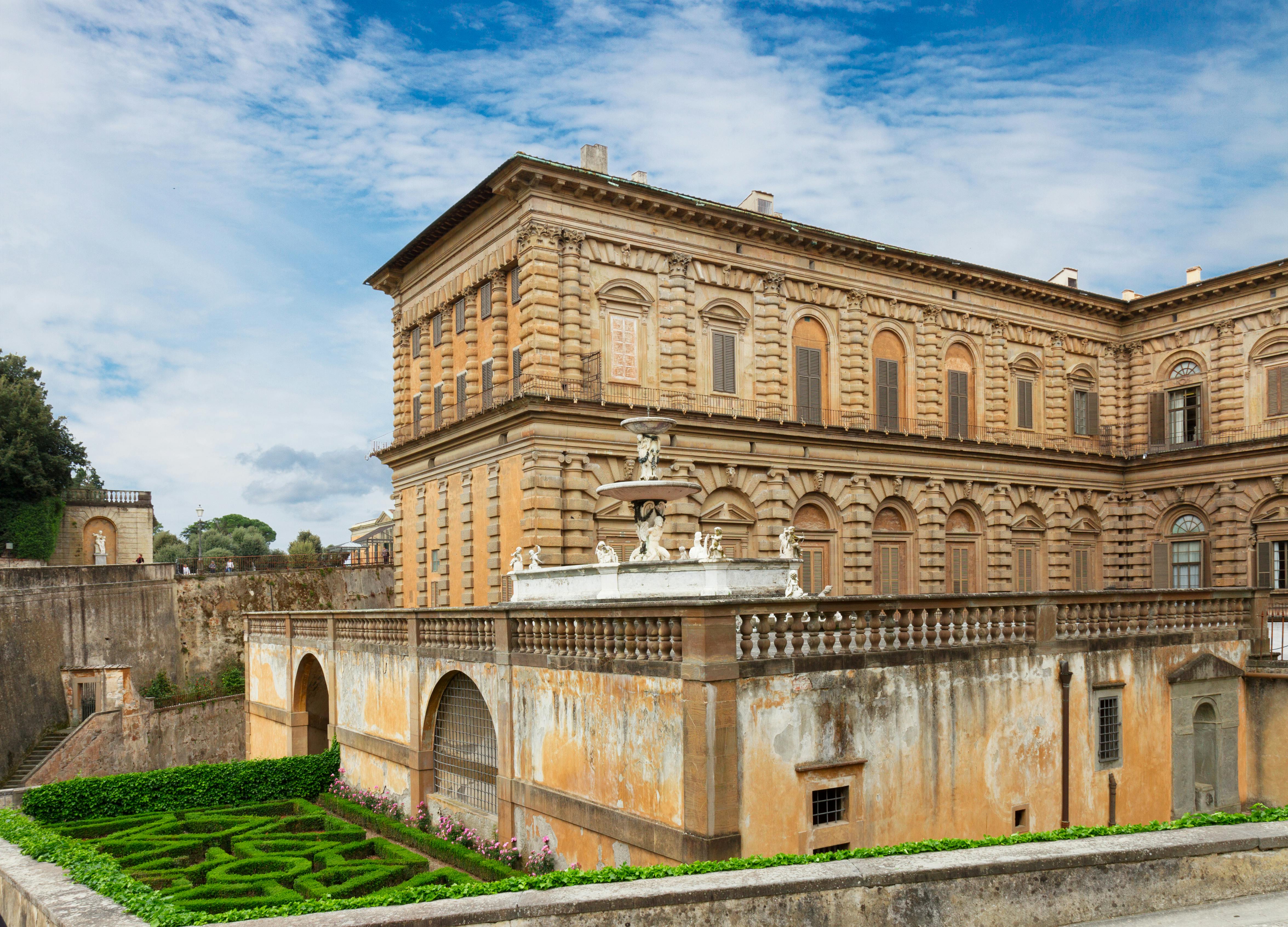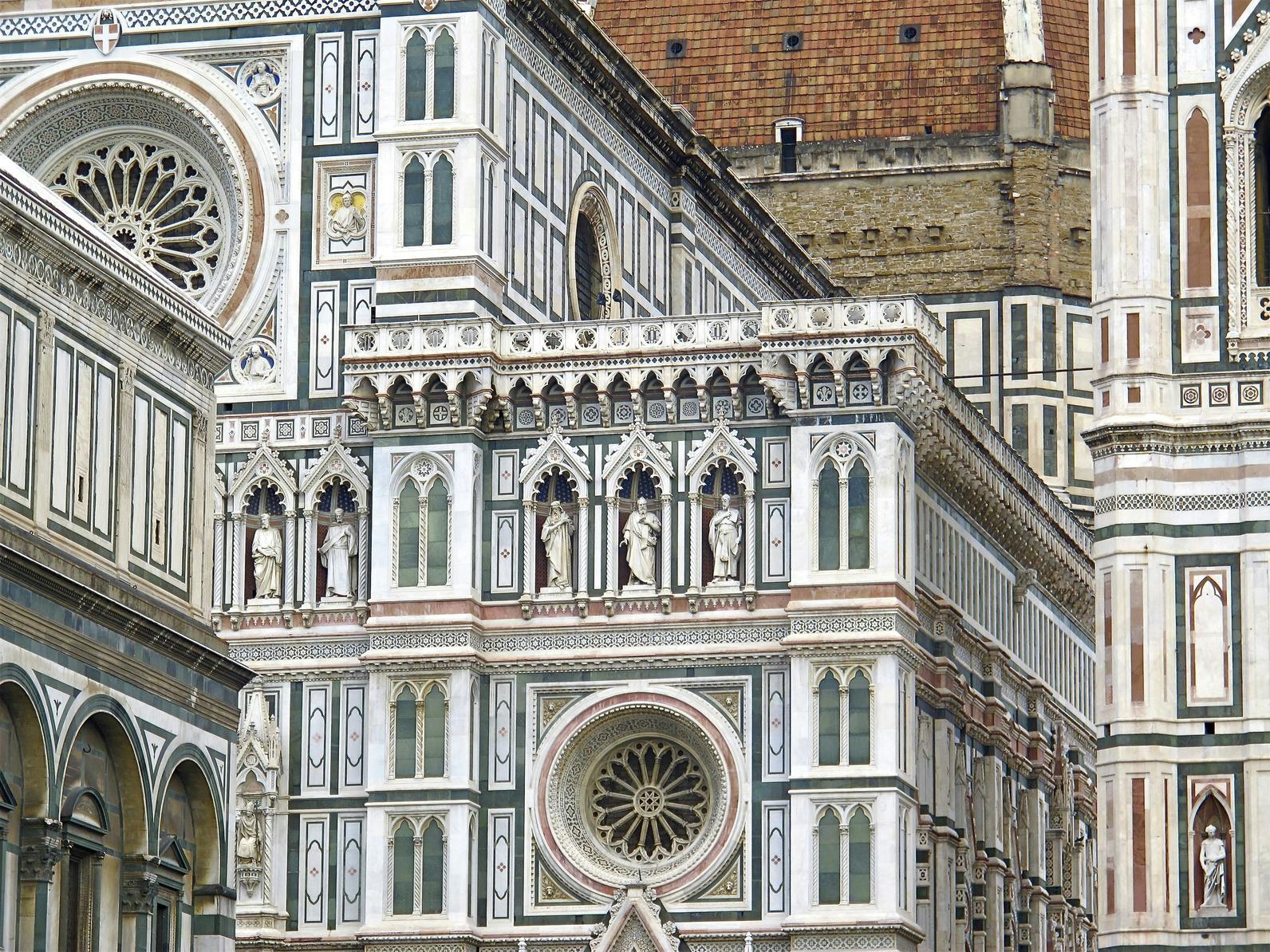 Florence - Italy
Florence - Italy
Uffizi Gallery
Read more
Uffizi Gallery Activities
-
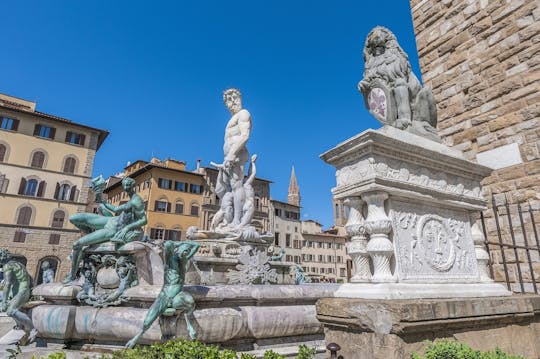 ActivitiesFlorence Renaissance and Medieval visit with Accademia and UffiziDiscover the most iconic places in Florence: the Accademia Gallery, the Uffizi and the historic heart of the city with a local guide and an audio guide app.Time : 5 hour15 minuteE-VoucherFree Cancellation5,098.18 TL 'Since the
ActivitiesFlorence Renaissance and Medieval visit with Accademia and UffiziDiscover the most iconic places in Florence: the Accademia Gallery, the Uffizi and the historic heart of the city with a local guide and an audio guide app.Time : 5 hour15 minuteE-VoucherFree Cancellation5,098.18 TL 'Since the -
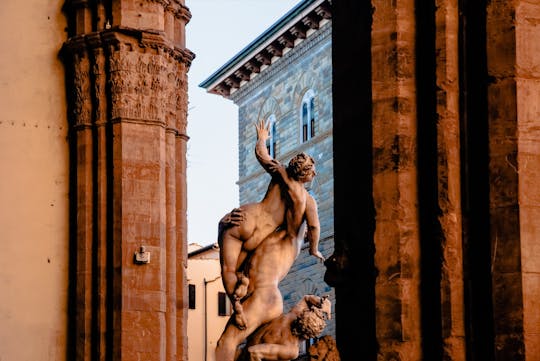 Attractions & guided toursBest of Florence walking tour with Uffizi Gallery visitBook your Florence's best walking tour with Uffizi Gallery visit and discover more about the beautiful city of Florence.Time : variableE-VoucherFree Cancellation2,790.98 TL 'Since the
Attractions & guided toursBest of Florence walking tour with Uffizi Gallery visitBook your Florence's best walking tour with Uffizi Gallery visit and discover more about the beautiful city of Florence.Time : variableE-VoucherFree Cancellation2,790.98 TL 'Since the -
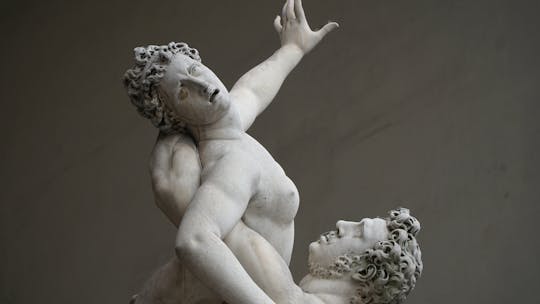 ActivitiesTreasures of Florence walking tour with Accademia and Uffizi skip-the-line ticketsSee the best of Florence with this combo guided tour that includes express entry to the Accademia and Uffizi Galleries plus a walking tour of the city.Time : 6 hourE-VoucherFree Cancellation3,981.79 TL 'Since the
ActivitiesTreasures of Florence walking tour with Accademia and Uffizi skip-the-line ticketsSee the best of Florence with this combo guided tour that includes express entry to the Accademia and Uffizi Galleries plus a walking tour of the city.Time : 6 hourE-VoucherFree Cancellation3,981.79 TL 'Since the -
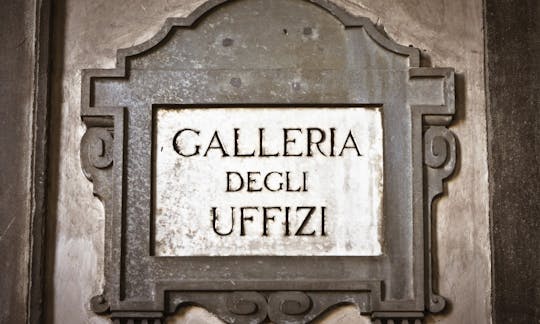 ActivitiesFlorence walking tour with Uffizi Gallery tickets and guided visitLet us take you on a walk through Florence and the Uffizi Gallery. Our guides will take you on a journey filled with art and history.Time : 7 hour15 minuteE-VoucherFree Cancellation5,768.02 TL 'Since the
ActivitiesFlorence walking tour with Uffizi Gallery tickets and guided visitLet us take you on a walk through Florence and the Uffizi Gallery. Our guides will take you on a journey filled with art and history.Time : 7 hour15 minuteE-VoucherFree Cancellation5,768.02 TL 'Since the -
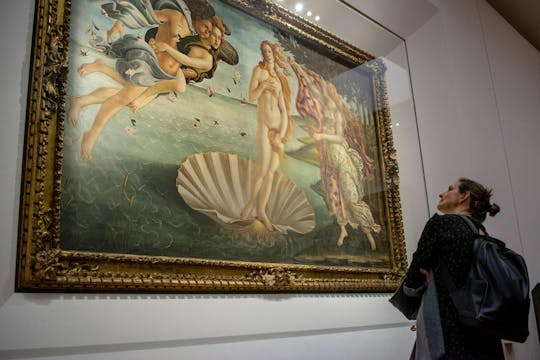 (Deprecated) TUI collectionUffizi Gallery skip-the-line tour with local guideDiscover the Uffizi Gallery with express-entry tickets and an expert guide at your disposal. Book now for a great experience for small groups.Time : 1 hour30 minuteE-VoucherFree Cancellation2,489.55 TL 'Since the
(Deprecated) TUI collectionUffizi Gallery skip-the-line tour with local guideDiscover the Uffizi Gallery with express-entry tickets and an expert guide at your disposal. Book now for a great experience for small groups.Time : 1 hour30 minuteE-VoucherFree Cancellation2,489.55 TL 'Since the -
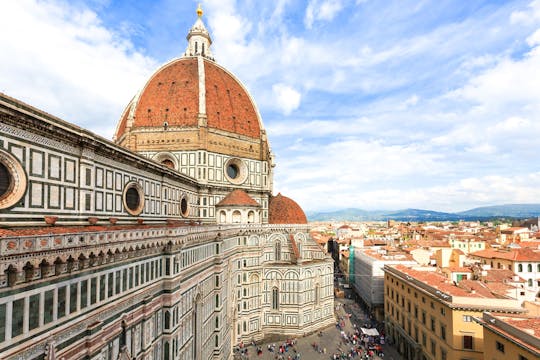 ActivitiesFrom Rome to Florence 1-day tour by train with pickup and Uffizi visitJoin a 1-day guided tour of Florence by train from Rome (pickup option) and gain skip-the-line access to the Uffizi Gallery after a walking tour of the city.Time : 12 hourE-VoucherFree Cancellation8,819.48 TL 'Since the
ActivitiesFrom Rome to Florence 1-day tour by train with pickup and Uffizi visitJoin a 1-day guided tour of Florence by train from Rome (pickup option) and gain skip-the-line access to the Uffizi Gallery after a walking tour of the city.Time : 12 hourE-VoucherFree Cancellation8,819.48 TL 'Since the -
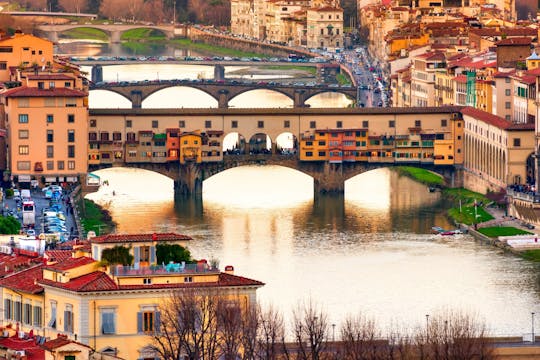 Walking toursUffizi Gallery, Michelangelo’s David and Accademia guided tourGet the best of the art, history, and architecture of Florence with this half-day guided tour. Skip the line at the Uffizi and the Accademia galleries and follow your guide through the historic center to admire the Ponte Vecchio bridge, the leather market, the cathedral, and much more.Time : 5 hour30 minuteE-VoucherFree Cancellation4,428.35 TL 'Since the
Walking toursUffizi Gallery, Michelangelo’s David and Accademia guided tourGet the best of the art, history, and architecture of Florence with this half-day guided tour. Skip the line at the Uffizi and the Accademia galleries and follow your guide through the historic center to admire the Ponte Vecchio bridge, the leather market, the cathedral, and much more.Time : 5 hour30 minuteE-VoucherFree Cancellation4,428.35 TL 'Since the -
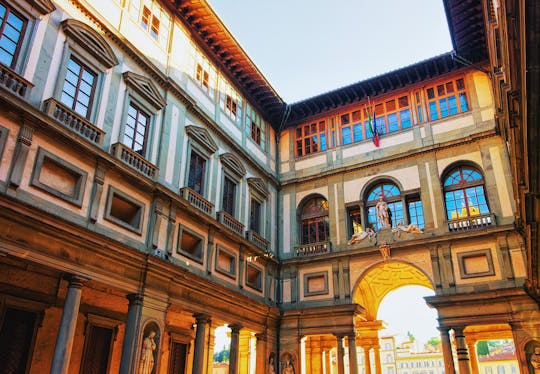 Attractions & guided toursUffizi Gallery skip-the-line ticket and self-guided visit appSkip the line to the Uffizi Gallery and discover its treasures independently by listening to the audio commentary from a user-friendly app.Time : variableE-VoucherFree Cancellation1,488.52 TL 'Since the
Attractions & guided toursUffizi Gallery skip-the-line ticket and self-guided visit appSkip the line to the Uffizi Gallery and discover its treasures independently by listening to the audio commentary from a user-friendly app.Time : variableE-VoucherFree Cancellation1,488.52 TL 'Since the -
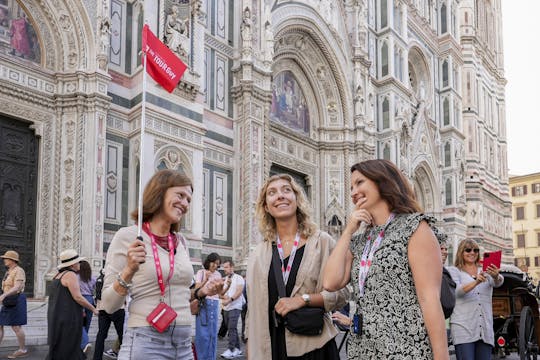 ActivitiesFlorence full-day tour with David, Uffizi and Ponte VecchioIndulge in a full-day tour of Florence's most iconic galleries, churches and streets with the help of an art historian guide!Time : variableE-VoucherFree Cancellation4,551.89 TL 'Since the
ActivitiesFlorence full-day tour with David, Uffizi and Ponte VecchioIndulge in a full-day tour of Florence's most iconic galleries, churches and streets with the help of an art historian guide!Time : variableE-VoucherFree Cancellation4,551.89 TL 'Since the -
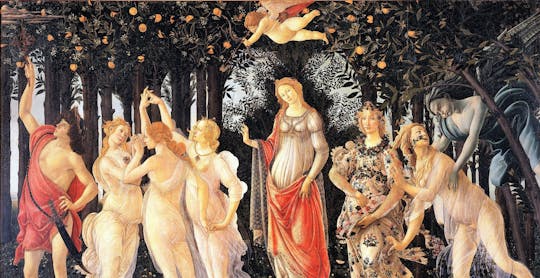 Attractions & guided toursSkip-the-line combo tickets to Uffizi Gallery, Palazzo Pitti and Boboli GardensBook your skip-the-line tickets to Uffizi Gallery, Pitti Palace and Boboli Gardens, visit the most important museums in Florence!Time : 120 hourE-VoucherFree Cancellation1,860.65 TL 'Since the
Attractions & guided toursSkip-the-line combo tickets to Uffizi Gallery, Palazzo Pitti and Boboli GardensBook your skip-the-line tickets to Uffizi Gallery, Pitti Palace and Boboli Gardens, visit the most important museums in Florence!Time : 120 hourE-VoucherFree Cancellation1,860.65 TL 'Since the -
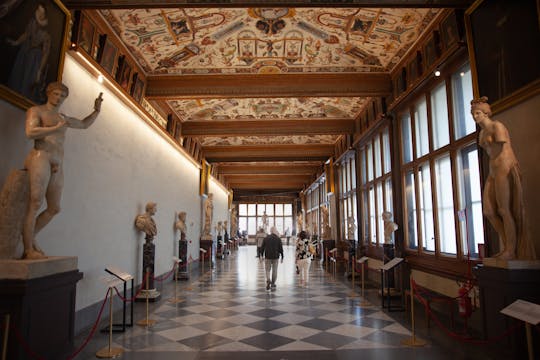 Attractions & guided toursSkip-the-line guided tour of the Uffizi Gallery for small groupsJoin a one hour and a half guided tour for small groups with skip-the-line tickets of the Uffizi Gallery to learn more about Italian Renaissance art.Time : 1 hour30 minuteE-VoucherFree Cancellation3,125.89 TL 'Since the
Attractions & guided toursSkip-the-line guided tour of the Uffizi Gallery for small groupsJoin a one hour and a half guided tour for small groups with skip-the-line tickets of the Uffizi Gallery to learn more about Italian Renaissance art.Time : 1 hour30 minuteE-VoucherFree Cancellation3,125.89 TL 'Since the -
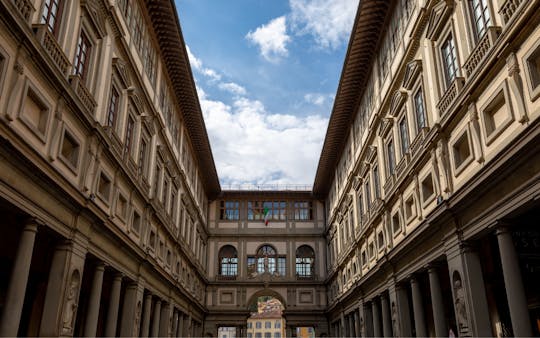 Attractions & guided toursSmart guided Uffizi audio tourEnjoy this guided audio tour of the Uffizi with skip-the-line entrance and ask your live guide all the questions you have.Time : 2 hourE-VoucherFree Cancellation1,674.59 TL 'Since the
Attractions & guided toursSmart guided Uffizi audio tourEnjoy this guided audio tour of the Uffizi with skip-the-line entrance and ask your live guide all the questions you have.Time : 2 hourE-VoucherFree Cancellation1,674.59 TL 'Since the -
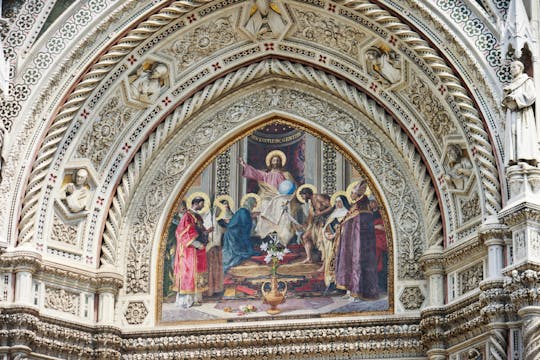 Attractions & guided toursFlorence art day pass. Duomo, Uffizi and AccademiaExplore Florence's best museums with a professional guide. See Botticelli's Birth of Venus, Michelangelo's David and the precious interior of the Cathedral.Time : variableE-VoucherFree Cancellation5,209.82 TL 'Since the
Attractions & guided toursFlorence art day pass. Duomo, Uffizi and AccademiaExplore Florence's best museums with a professional guide. See Botticelli's Birth of Venus, Michelangelo's David and the precious interior of the Cathedral.Time : variableE-VoucherFree Cancellation5,209.82 TL 'Since the -
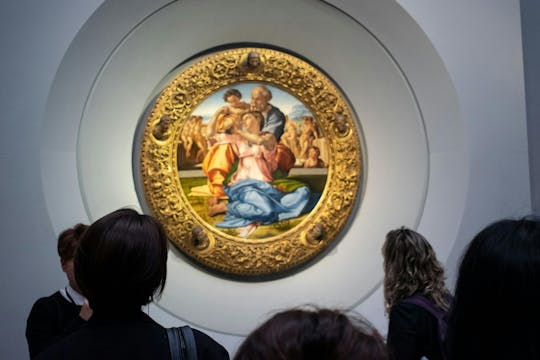 (Deprecated) TUI collectionSmall group tour of Florence’s Uffizi and Accademia GalleryBook this small group guided tour to visit Florence's Uffizi and Accademia galleries. Skip the line to see masterpieces by Botticelli and Michelangelo's David.Time : 3 hourE-VoucherFree Cancellation3,866.43 TL 'Since the
(Deprecated) TUI collectionSmall group tour of Florence’s Uffizi and Accademia GalleryBook this small group guided tour to visit Florence's Uffizi and Accademia galleries. Skip the line to see masterpieces by Botticelli and Michelangelo's David.Time : 3 hourE-VoucherFree Cancellation3,866.43 TL 'Since the -
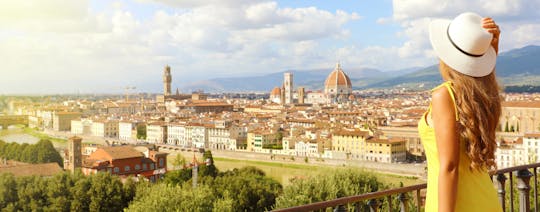 Attractions & guided toursFlorence city pass for 5 days with Uffizi, Accademia and DomeVisit up to 9 museums in Florence saving time and money with your city pass. Discover the city's highlights in 5 days with an audio guide on your smartphone.Time : 120 hourE-VoucherFree Cancellation6,140.15 TL 'Since the
Attractions & guided toursFlorence city pass for 5 days with Uffizi, Accademia and DomeVisit up to 9 museums in Florence saving time and money with your city pass. Discover the city's highlights in 5 days with an audio guide on your smartphone.Time : 120 hourE-VoucherFree Cancellation6,140.15 TL 'Since the -
 ActivitiesFlorence self-guided audio tourExplore Florence at your own pace! Enjoy an app containing over 130 points of interest, famous transport routes, sightseeing itineraries and walking tours.Time : variableE-VoucherFree Cancellation372.13 TL 'Since the
ActivitiesFlorence self-guided audio tourExplore Florence at your own pace! Enjoy an app containing over 130 points of interest, famous transport routes, sightseeing itineraries and walking tours.Time : variableE-VoucherFree Cancellation372.13 TL 'Since the -
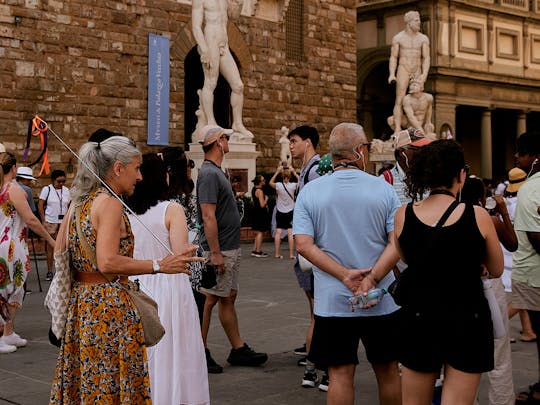 Attractions & guided toursFlorence Guided Walking Tour and UffiziDiscover Florence's history and art scene on a guided tour. Uncover landmarks, Medici family legacy, and visit the Uffizi Gallery without queues.Time : 3 hour30 minuteE-VoucherFree Cancellation0.00 TL 'Since the
Attractions & guided toursFlorence Guided Walking Tour and UffiziDiscover Florence's history and art scene on a guided tour. Uncover landmarks, Medici family legacy, and visit the Uffizi Gallery without queues.Time : 3 hour30 minuteE-VoucherFree Cancellation0.00 TL 'Since the -
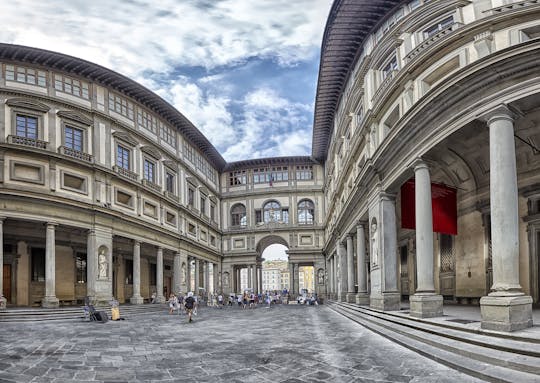 Attractions & guided toursGuided visit and skip-the-line tickets to the Uffizi GalleryEnjoy a guided tour of one of the most famous art galleries in the world: the Uffizi! Get advantage of the skip-the-line ticket and enter the museum with no stress of long lines.Time : 1 hour30 minuteE-VoucherFree Cancellation2,344.42 TL 'Since the
Attractions & guided toursGuided visit and skip-the-line tickets to the Uffizi GalleryEnjoy a guided tour of one of the most famous art galleries in the world: the Uffizi! Get advantage of the skip-the-line ticket and enter the museum with no stress of long lines.Time : 1 hour30 minuteE-VoucherFree Cancellation2,344.42 TL 'Since the -
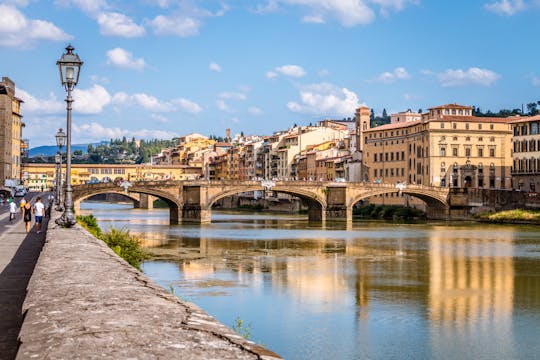 Attractions & guided toursFlorence semi-private tour with Uffizi and AccademiaSpend the day discovering the Duomo and Florence's historic center. Dive into the Renaissance by visiting the Uffizi and the Accademia Gallery.Time : 5 hourE-VoucherFree Cancellation6,271.88 TL 'Since the
Attractions & guided toursFlorence semi-private tour with Uffizi and AccademiaSpend the day discovering the Duomo and Florence's historic center. Dive into the Renaissance by visiting the Uffizi and the Accademia Gallery.Time : 5 hourE-VoucherFree Cancellation6,271.88 TL 'Since the -
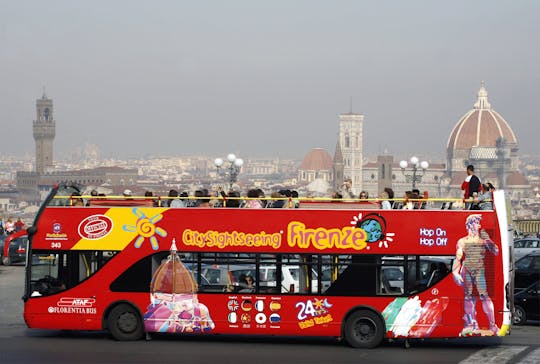 ActivitiesUffizi Gallery guided tour with 24 or 48-hour hop-on hop-off bus ticketsEnjoy a guided tour of the world-famous Uffizi Gallery, then visit Florence on board a hop-on hop-off bus, admiring its highlights with 24 or 48-hour tickets!Time : variableE-VoucherFree Cancellation2,977.04 TL 'Since the
ActivitiesUffizi Gallery guided tour with 24 or 48-hour hop-on hop-off bus ticketsEnjoy a guided tour of the world-famous Uffizi Gallery, then visit Florence on board a hop-on hop-off bus, admiring its highlights with 24 or 48-hour tickets!Time : variableE-VoucherFree Cancellation2,977.04 TL 'Since the -
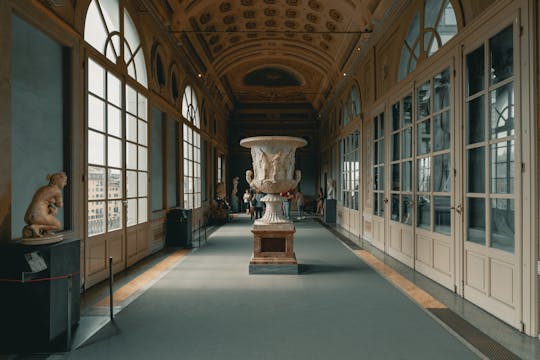 ActivitiesUffizi ticket entrance and open bus tour of FlorenceExplore the famous Uffizi gallery thanks to your ticket entrance and admire Florence in 1 or 2 days on board of an open bus.Time : 48 hourE-VoucherFree Cancellation2,307.21 TL 'Since the
ActivitiesUffizi ticket entrance and open bus tour of FlorenceExplore the famous Uffizi gallery thanks to your ticket entrance and admire Florence in 1 or 2 days on board of an open bus.Time : 48 hourE-VoucherFree Cancellation2,307.21 TL 'Since the -
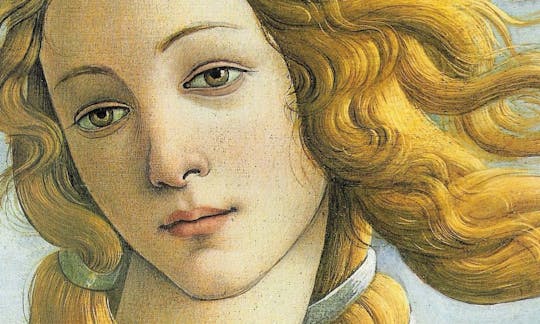 Attractions & guided toursSkip-the-line tickets for the Uffizi GalleryBook your skip-the-line tickets for the Uffizi Gallery and discover the most famous Renaissance art collection in the world and the museum's incredible temporary exhibitions.Time : variableE-VoucherFree Cancellation1,339.67 TL 'Since the
Attractions & guided toursSkip-the-line tickets for the Uffizi GalleryBook your skip-the-line tickets for the Uffizi Gallery and discover the most famous Renaissance art collection in the world and the museum's incredible temporary exhibitions.Time : variableE-VoucherFree Cancellation1,339.67 TL 'Since the -
 Attractions & guided toursUffizi Gallery tickets and private guided tour of Florence Art MuseumBook a private tour inside the Uffizi Gallery. Explore the private lives of the Great Masters, hear their fascinating backstories and works of the Renaissance from Botticelli and Leonardo da Vinci to Caravaggio.Time : 2 hour30 minuteE-VoucherFree Cancellation13,545.53 TL 'Since the
Attractions & guided toursUffizi Gallery tickets and private guided tour of Florence Art MuseumBook a private tour inside the Uffizi Gallery. Explore the private lives of the Great Masters, hear their fascinating backstories and works of the Renaissance from Botticelli and Leonardo da Vinci to Caravaggio.Time : 2 hour30 minuteE-VoucherFree Cancellation13,545.53 TL 'Since the -
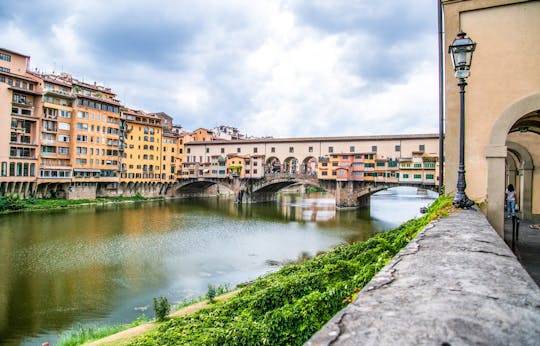 ActivitiesFrom Rome to Florence 1-day tour by train with Uffizi Gallery ticketsJoin a 1-day guided tour of Florence by train from Rome (meeting point option) and gain skip-the-line access to the Uffizi Gallery after a walking tour of the city.Time : 12 hourE-VoucherFree Cancellation7,777.52 TL 'Since the
ActivitiesFrom Rome to Florence 1-day tour by train with Uffizi Gallery ticketsJoin a 1-day guided tour of Florence by train from Rome (meeting point option) and gain skip-the-line access to the Uffizi Gallery after a walking tour of the city.Time : 12 hourE-VoucherFree Cancellation7,777.52 TL 'Since the -
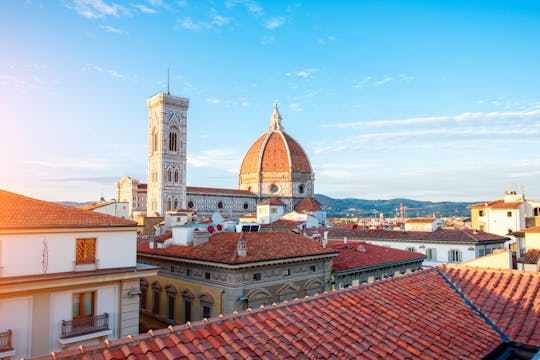 Attractions & guided toursFlorence city pass for 1 day with Uffizi, Accademia and DomeVisit the Uffizi, Accademia and Dome in Florence saving time and money with your city pass. Discover the sites with an audio guide on your smartphone.Time : 24 hourE-VoucherFree Cancellation3,311.96 TL 'Since the
Attractions & guided toursFlorence city pass for 1 day with Uffizi, Accademia and DomeVisit the Uffizi, Accademia and Dome in Florence saving time and money with your city pass. Discover the sites with an audio guide on your smartphone.Time : 24 hourE-VoucherFree Cancellation3,311.96 TL 'Since the -
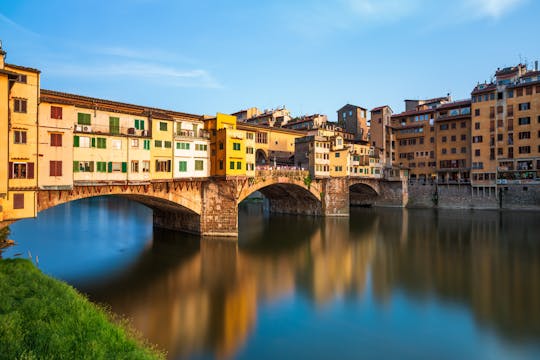 City activitiesFlorence Museums special afternoon with Accademia and UffiziDiscover Florence's main museums with a guide! Visit the Uffizi and Accademia Gallery and the Vasari Corridor from the outside.Time : 5 hourE-VoucherFree Cancellation4,428.35 TL 'Since the
City activitiesFlorence Museums special afternoon with Accademia and UffiziDiscover Florence's main museums with a guide! Visit the Uffizi and Accademia Gallery and the Vasari Corridor from the outside.Time : 5 hourE-VoucherFree Cancellation4,428.35 TL 'Since the -
 Excursions & day tripsFlorence tour by high-speed train from Rome including Uffizi ticketsBook your tickets for this tour to Florence! Take the high-speed train from Rome and enjoy skip-the-line entrance tickets to Uffizi Gallery.Time : 12 hourE-VoucherFree Cancellation5,395.89 TL 'Since the
Excursions & day tripsFlorence tour by high-speed train from Rome including Uffizi ticketsBook your tickets for this tour to Florence! Take the high-speed train from Rome and enjoy skip-the-line entrance tickets to Uffizi Gallery.Time : 12 hourE-VoucherFree Cancellation5,395.89 TL 'Since the -
 Attractions & guided toursSmart Tour of the Uffizi in FlorenceEnjoy this smart tour of the Uffizi Gallery and marvel at some of the most awe-inspiring art masterpieces in the world.Time : 1 hour45 minuteE-VoucherFree Cancellation0.00 TL 'Since the
Attractions & guided toursSmart Tour of the Uffizi in FlorenceEnjoy this smart tour of the Uffizi Gallery and marvel at some of the most awe-inspiring art masterpieces in the world.Time : 1 hour45 minuteE-VoucherFree Cancellation0.00 TL 'Since the

